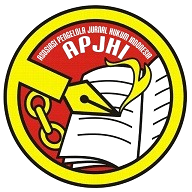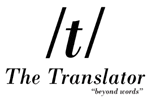Modelling the Development of Child Prisoners Based on Justice
Abstract
This study examines the importance of reconstructing the development model for child prisoners through justice-based diversion, focusing on how to better accommodate their right to quality education, as guaranteed by international resolutions, conventions, and Indonesia's 1945 Constitution. The research highlights the need for appropriate educational models that enable child prisoners to reintegrate into society as responsible, law-abiding citizens. Using a normative juridical approach, the study explores literature-based sources to propose a model incorporating formal and non-formal education to enhance the self-competence of child prisoners. The proposed educational model aims to equip children with skills and knowledge, ensuring they can reintegrate successfully into their families and communities after serving their sentences. By aligning educational approaches with the principles of justice, the model offers a pathway to reducing recidivism and improving the long-term prospects for child prisoners. The study emphasises the need for a comprehensive and child-centred development program that reflects the child's best interests and supports their rehabilitation.
Keywords
Full Text:
PDFReferences
Aprilianda, Nurini. "Laporan Akhir Pengkajian Hukum tentang Model Pembinaan Anak berbasis Pendidikan Layak Anak dalam Sistem Pemasyarakatan." Jakarta: Pusat Penelitian dan Pengembangan Sistem Hukum Nasional Badan Pembinaan Hukum Nasional Kementerian Hukum dan Hak Asasi Manusia RI, 2014.
Azizah, Nur. "The Analysis Of Minimum Marriage Age Determination In Indonesia And Other Islamic Countries." Jurnal Ilmiah Al-Syir'ah 16, no. 2 (26 Desember 2018): 148-60. https://doi.org/10.30984/jis.v16i2.664.
Boyden, Jo. "Childhood and the policy makers: A comparative perspective on the globalization of childhood." Dalam Constructing and Reconstructing Childhood, 3 ed., 35. Oxfordshire: Routledge, 2015.
Breuilly, John. Labour and Liberalism in Nineteenth-Century Europe: Essays in Comparative History. Manchester University Press, 1994.
Campbell, Sydney, Fiona J. Moola, Jennifer L. Gibson, Jeremy Petch, dan Avram Denburg. "The Unspeakable Nature of Death & Dying During Childhood: A Silenced Phenomenon in Pediatric Care." OMEGA - Journal of Death and Dying 89, no. 1 (1 Mei 2024): 88-107. https://doi.org/10.1177/00302228211067034.
Dipa Rudiana, I Nyoman, dan I Ketut Rai Setiabudhi. "Reconstruction of the Diversion Concept in a Child Criminal Jurisdiction System Based on Dignified Justice." PRIZREN SOCIAL SCIENCE JOURNAL 5, no. 1 (29 April 2021): 104-12. https://doi.org/10.32936/pssj.v5i1.210.
Fakultas Hukum Universitas Wiralodra Indramayu, dan Hamja Hamja. "Community Based Corrections Sebagai Alternatif Model Pembinaan Narapidana Di Masa Mendatang." Arena Hukum 12, no. 3 (23 Desember 2019): 482-99. https://doi.org/10.21776/ub.arenahukum.2019.01203.5.
Friedman, Lawrence M. Sistem Hukum : Perspektif Ilmu Sosial. Diterjemahkan oleh M. Khozim. Bandung: Nusamedia, 2019.
Hafrida, Hafrida, Yulia Monita, dan Elisabeth Siregar. "Pembinaan Narapidana Anak Di Lembaga Pemasyarakatan Anak Sei. Bulu Muara Bulian." Publikasi Pendidikan 5, no. 3 (1 September 2015): 198-213. https://doi.org/10.26858/publikan.v5i3.1613.
Hamilton, Vivian E. "Adulthood in law and culture." Tul. L. Rev 91 (2016): 55.
Hamja, Hamja, Sulistiani Andan Dewi, dan Eri Eka Sukarini. "Efektivitas Pembinaan Mental Dan Deradikalisasi Narapidana Teroris Di Lembaga Pemasyarakatan Kelas Iii Gunung Sindur Bogor." Masalah-Masalah Hukum 50, no. 4 (30 Oktober 2021): 460-72. https://doi.org/10.14710/mmh.50.4.2021.460-472.
Harun, Noraida, Asiah Bidin, Kamaliah Salleh, dan Noor "˜Ashikin Hamid. "Minor's Capacity to Contract in Malaysia: Issues and Challenges." International Journal of Academic Research in Business and Social Sciences 8, no. 12 (14 Januari 2019): 1549-56. https://doi.org/10.6007/IJARBSS/v8-i12/5257.
Hawkins, Jennifer. "Affect, Values and Problems Assessing Decision-Making Capacity." The American Journal of Bioethics 24, no. 8 (2 Agustus 2024): 71-82. https://doi.org/10.1080/15265161.2023.2224273.
Hawley, Jo, Ilona Murphy, dan Manuel Souto-Otero. "Prison Education And Training In Europe : Current State-Of-Play And Challenges." European Commission, 2013.
Hidayat, Komar, Yunusrul Zen, dan Diding Rahmat. "Analisis Yuridis Terhadap Kebijakan Diversi Pemerintah Daerah Dalam Perlindungan Anak Di Kabupaten Kuningan." UNIFIKASI : Jurnal Ilmu Hukum 4, no. 2 (4 Desember 2017): 86. https://doi.org/10.25134/unifikasi.v4i2.706.
Irwansyah, Irwansyah. "Penelitian Hukum: Pilihan Metode & Praktik Penulisan Artikel." Yogyakarta: Mirra Buana Media 8 (2020).
Izdiharuddin, Izmi, Izmi Che Jamaludin Mahmud, Suria Fadhillah, Nadzriah Ahmad, dan Rafizah Hassan. "The Analysis of Child Sexual Grooming Offences in Malaysia." CRELDA Journal 7 (21 Agustus 2023): 85-98.
Jensen, Sarah K. G., Raschida R. Bouhouch, Judd L. Walson, Bernadette Daelmans, Rajiv Bahl, Gary L. Darmstadt, dan Tarun Dua. "Enhancing the child survival agenda to promote, protect, and support early child development." Seminars in Perinatology, Global Perinatal Medicine, 39, no. 5 (1 Agustus 2015): 373-86. https://doi.org/10.1053/j.semperi.2015.06.002.
Kirkwood, Steve. "A practice framework for restorative justice." Aggression and Violent Behavior, Practice Frameworks in the Criminal Justice System, 63 (1 Maret 2022): 101688. https://doi.org/10.1016/j.avb.2021.101688.
Law, David S., dan Mila Versteeg. "The Evolution and Ideology of Global Constitutionalism." California Law Review 99, no. 5 (2011): 1163.
Logeswaran, Sophini, Megan Hollett, Sonia Zala, Lisa Richardson, dan Katrina Scior. "How Do People with Intellectual Disabilities Construct Their Social Identity? A Review." Journal of Applied Research in Intellectual Disabilities 32, no. 3 (Mei 2019): 533-42. https://doi.org/10.1111/jar.12566.
Mahmud, Izmi Izdiharuddin B Che Jamaludin, Nadzriah Ahmad, dan Rafizah Abu H assan. "A Legal Analysis On The Financial Remedies For Victims Of Child Sexual Abuse Between Malaysia, International Framework And The United Kingdom." Malayan Law Journal 7, no. 46 (2022): 250-62. https://doi.org/10.55573/JISED.07461526.
Mullin, Tirza A. "Eighteen Is Not a Magic Number: Why the Eighth Amendment Requires Protection for Youth Aged Eighteen to Twenty-Five." U. Mich. JL Reform 53 (2019): 807.
Prawirawijaya, Rayendra Rosa, dan Nandang Sambas. "Pembinaan Terhadap Anak yang Berhadapan dengan Hukum di Lembaga Pembinaan Khusus Anak Tangerang Berdasarkan Tujuan Perlindungan Anak Menurut Undang-Undang Nomor 12 Tahun 1995 Tentang Lembaga Pemasyarakatan dan Undang-Undang Nomor 11 Tahun 2012 Sistem Peradilan Pidana Anak." Dalam Prosiding Ilmu Hukum, 2:844-50. Bandung: Universitas Islam Bandung, 2016.
Rizky, Lucitania, Muhammad Ade Safri Salampessy, dan Isna Achdyana. "Effectiveness of The Convention on the Rights of the Child (CRC) Regime by UNICEF in Encouraging the Implementation of Child Protection in SoutheastAsian Countries." JASSP 2, no. 1 (30 Mei 2022): 12-20. https://doi.org/10.23960/jassp.v2i1.50.
Rossi, Filippo. "Children of a Lesser God. The Legalized Exploitation of Child Labour as Revealed by the Liberal Era Judicial Record (Late 19th"”Early 20th Century)." Dalam Family Law and Society in Europe from the Middle Ages to the Contemporary Era, disunting oleh Maria Gigliola di Renzo Villata, 283-312. Cham: Springer International Publishing, 2016. https://doi.org/10.1007/978-3-319-42289-3_12.
Rossum, Matthias van. "The Carceral Colony: Colonial Exploitation, Coercion, and Control in the Dutch East Indies, 1810s-1940s." International Review of Social History 63, no. S26 (Agustus 2018): 65-88. https://doi.org/10.1017/S0020859018000226.
Siregar, Mahmul, Rosmalinda Marlina, dan Azmiati Zuliah. Pedoman Praktis Melindungi Anak dengan Hukum Pada Situasi Emergensi dan Bencana Alam. Medan: Pusat kajian dan Perlindungan Anak (PKPA), 2007.
Steinberg, Laurence, dan Grace Icenogle. "Using Developmental Science to Distinguish Adolescents and Adults Under the Law." Annual Review of Developmental Psychology 1, no. 1 (24 Desember 2019): 21-40. https://doi.org/10.1146/annurev-devpsych-121318-085105.
Vaghri, Ziba, Jean Zermatten, Gerison Lansdown, dan Roberta Ruggiero, ed. Monitoring State Compliance with the UN Convention on the Rights of the Child: An Analysis of Attributes. Switzerland: Springer Nature, 2022. https://doi.org/10.1007/978-3-030-84647-3.
Young, Susan. Music in Early Childhood: Exploring the Theories, Philosophies and Practices. 1 ed. London: Routledge, 2023. https://doi.org/10.4324/9781003331193.
DOI: https://doi.org/10.33756/jelta.v17i1.21928
Refbacks
- There are currently no refbacks.

This work is licensed under a Creative Commons Attribution-NonCommercial 4.0 International License.



.png)







_logo2.png)



